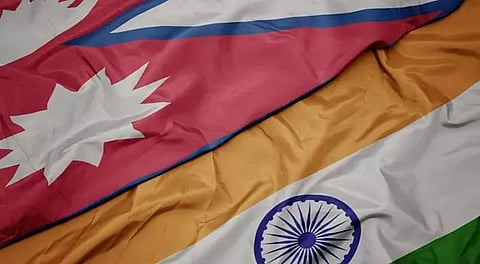
- Home
- Live Blog
- Breaking News
- Top Headlines
- Cities
- NE News
- Sentinel Media
- Sports
- Education
- Jobs

India's neighbourhood outreach has received a fresh impetus with the maiden meeting of the Inter-Ministerial Coordination Group (IMCG) deliberating on several projects initiated under its "Neighbourhood First" policy for improving cross-border trade, connectivity, and development cooperation. The meeting outcome has great significance for the country's northeast region as these are related to India's bilateral relations with Bangladesh, Bhutan, Myanmar, and Nepal apart from Pakistan, Maldives, Afghanistan and Sri Lanka. A key initiative under the policy figured out during the deliberation is railway connectivity with Bangladesh. The Agartala-Akhaura rail link between India and Bangladesh will connect the Agartala railway station with Gangasagar station in Bangladesh. The Ministry of External Affairs has funded the construction of the 6.57-km-long Bangladesh portion of the rail link with an approved cost of Rs 392.52 crore. The total cost of the project including the 5.46-km Indian portion is Rs 967.50 crore of which about Rs 580 crore could be spent till March. The progress of work on the Indian portion financed by the Ministry of Development of Northeastern Region is 59% and in Bangladesh, the portion is only 50% due to which the rescheduled deadline of June this year for commissioning of the rail link is likely to be missed again. The project earlier missed several deadlines including the past two deadlines being December 2020 and September 2021. The delay is attributed to marshy and soft soil condition which is not favourable for the laying of railway tracks and construction of a viaduct of 3.1 km on the Indian portion. The survey work for another 30-km rail link between the two countries connecting Belonia in Tripura and Feni in Bangladesh has also been completed. However, the euphoria over the second rail link between India and Bangladesh through the Northeast is fast evaporating due to the slow pace of the long Agartala-Akharua rail link work. The commissioning of the Agartala-Akhaura rail link is estimated to reduce the train journey between Agartala and Kolkata to ten hours from the existing 31 hours. The travel distance through Dhaka through this link will be reduced to 514 km from an existing distance of 1613 km via Guwahati and through the Chicken-neck corridor which explains the geostrategic importance and advantage of this small rail link project of just 12.03 km length. Once this link is commissioned, faster movement of goods from the rest of India through the sea route and Chittagong port in Bangladesh will be possible. The distance between Agartala and Chittagong port through the Maitree bridge between India and Bangladesh over the Feni River is only 192 km. Bilateral relations between the two countries deepened with India pushing its Neighbourhood First policy. This facilitated these cross-border connectivity projects which are vital to ending the landlocked situation of the northeast region gripping it ever since the partition. The rail link project was initiated by India in 2010 and the Memorandum of Understanding was signed in 2013 at Dhaka which paved the way for starting the project. Northeast Frontier Railway and Bangladesh Railway will be required to sign a separate MoU on the commission of the rail link for train operation and maintenance of rolling stock. The long delay in the execution of the rail link project, despite no diplomatic hurdles, deprived the northeast region of the benefits of improved connectivity which is a key challenge the IMCG needs to address. The long delay in commissioning of the Kaladan Multimodal Transit Transport project pushed by India in Myanmar is another example of the pace of cross-border projects that are vital to restoring access of the northeast to sea routes through multimodal connectivity but how the delay has left the region keep chasing the mirage of development and improved connectivity through its long international borders. The IMCG is a high-level mechanism for comprehensive management of bilateral relations under the Neighbourhood First policy with the involvement of relevant ministries, the Ministry of External Affairs can leverage it for improving the delivery mechanism for cross-border projects. Mere execution and commissioning of these connectivity projects are not going to ensure desired benefits for the region. The deepening of the bilateral relationship is critical to the sustainability of cross-border projects and in this context, India's two key foreign policy goals under the Act East Policy and Neighbourhood First Policy have special significance for the Northeast and decisions taken at a high-level mechanism like IMCG are always watched with a keen interest in anticipation of their positive outcomes. India's improved bilateral and multilateral relations with its neighbours have triggered dreams of faster growth among people in the region. The challenge for the Central government is to ensure that such dreams are not shattered by undue delay in project execution. While complexities involved in cross-border projects cannot be wished away, efforts to meet the deadline by overcoming administrative and technological barriers will help create a positive mindset that will keep alive the hopes and dreams of better days.